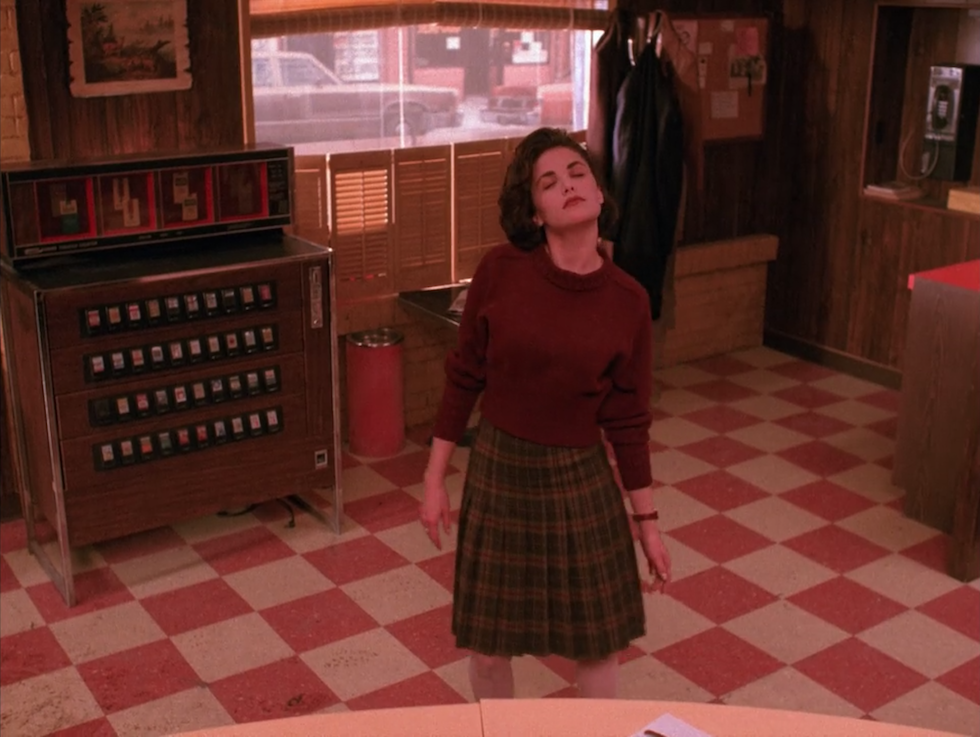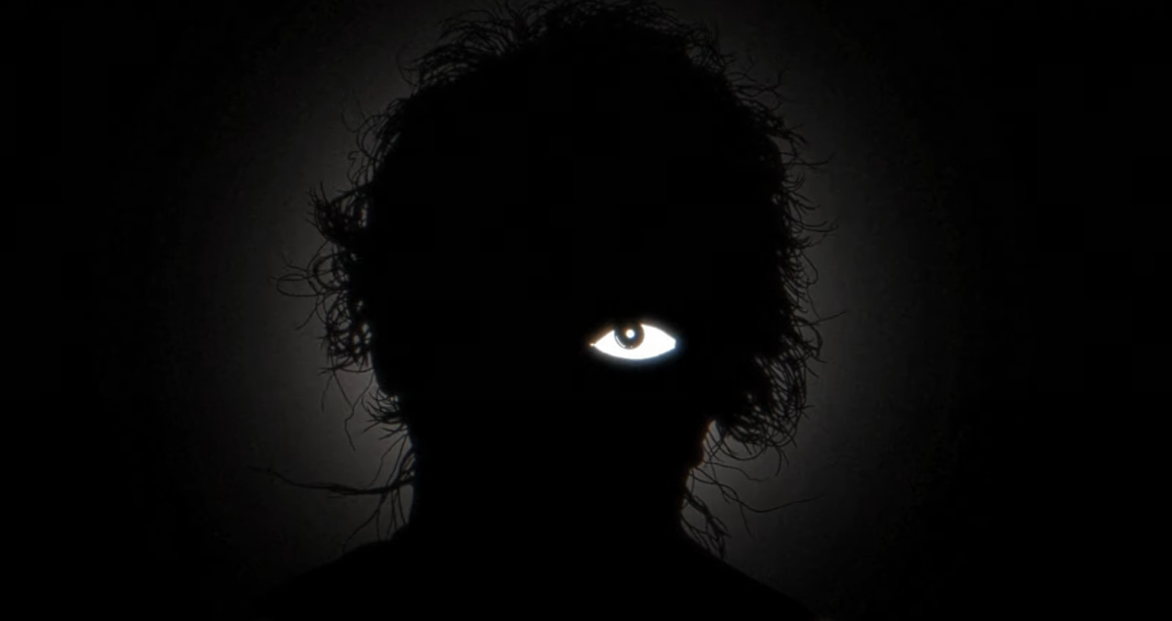Music
Listen to the Sounds: A Retrospective of the Music of Twin Peaks

On April 8, 1990, the world was introduced to the mysterious town of Twin Peaks, the death of its homecoming queen Laura Palmer, and the haunting score crafted by composer Angelo Badalamenti.
The sounds of Twin Peaks still linger long after its original airing from 1990-1991 and the 18-part revival, appropriately called The Return, that aired in 2017. The music of Twin Peaks has received widespread critical acclaim, with The Guardian calling the original score the “summit of TV soundtracks.” The main theme for the series even won Badalamenti a Grammy for Best Pop Instrumental Performance in 1991.
Five songs featured in the original series actually had lyrics written by co-creator and auteur mastermind David Lynch; The Return made music a character in its own right through ending nearly every episode with a performance by real-world recording artists at the fictional tavern, the Roadhouse.
Probably the most recognizable tracks from the original series are the Twin Peaks Theme and its lyrical version, performed by Julee Cruise, titled “Falling.”
It’s not often that a piece of score sets the stage for an entire world in film or television. The theme of Twin Peaks permeates the entire original series; the twang of the low guitar combined with the iconic synth motif creates a melancholic mood unlike anything else. You sense the mystery that lives in the woods outside of town; you feel the loss and longing of the townspeople who let a young girl’s life slip through their neglectful fingers.
In “Falling,” Cruise’s voice meshes beautifully and seamlessly with the original theme. The lyrics imply a youthful hope toward falling love, while the instrumental gives an added air of foreboding. “Don’t let yourself be hurt this time,” Cruise croons. But Laura will always be hurt. The cycle cannot be broken, yet she still reaches out and hopes for love and approval.
“Laura Palmer’s Theme” takes on a new, darker tone. The hum of the synthesizers and occasional low note on the piano create a somber feeling of loneliness and pain. This song personifies Laura’s isolation and her hopefulness that she will somehow find salvation. Darkness and light; the Black Lodge and the White Lodge, both at war over a teenage girl’s soul. You can almost hear Sarah Palmer wailing in horror over her daughter’s death at the song’s climax.
“Audrey’s Dance” is entirely “too dreamy.” This track is a slow, jazzy number with notes that graze against each other. Listening with headphones is a particularly unique experience, as the song is mixed so that the creepy, beautiful notes pass back and forth between your ears.
“Dance of the Dream Man” is everything you’d expect to hear inside a basement jazz club bathed in red and black: finger-snapping, seductive saxophones, and a baseline that’ll make anybody want to say “Let’s rock!” This track encapsulates the whimsical nonsense of The Man From Another Place and somehow still leaves him shrouded under a veil of mystery and vibraphones.
With Twin Peaks: The Return, Lynch chose to subvert the traditional music composition of the series by including studio performances from real-life recording artists, featuring big names like Nine Inch Nails, Chromatics, and the incomparable Eddie Vedder.
Kicking things off is Chromatics, who made their musical appearance in Part 1 with a performance of the song “Shadow.” This track is altogether haunting and catchy; each listen requires a subsequent listen, and suddenly it’s an hour later and you realize you’ve had the song on an endless repeat.
Much significance can be derived from this track, but for me, it brings to mind a scene from Part 4, in which Bobby Briggs sees a photo of Laura Palmer at the Twin Peaks Sheriff’s Station and begins to sob uncontrollably. This scene also features the first occurrence of Laura Palmer’s musical motif in The Return.
While not on the official soundtrack for Twin Peaks: The Return, “American Woman” by Muddy Magnolias is one of the few songs to be featured twice in the entire season.
The first instance is in Part 1, as it marks our introduction to Mr. C, Special Agent Dale Cooper’s evil doppelgänger. The second is in Part 16, as an extended tracking shot follows the enigmatic Diane Evans down a long hallway after she’s told to “:-) ALL.” by Mr. C.
In the series, the song is heavily distorted into a “David Lynch remix,” implying that the characters we see are not themselves. Mr. C is not our beloved Coop, and ultimately, the Diane we know is not entirely Diane.
I would be remiss if I didn’t mention the appearance of Nine Inch Nails and their surprise performance of “She’s Gone Away” from their 2016 EP, Not the Actual Events. The song sounds like some kind of Lynchian fever dream, and their musical sequence in the show was crafted to match.
Last but not least was what many found to be the most beloved Roadhouse performance in The Return: Eddie Vedder and a very rare acoustic performance of “Out of Sand.” Sadly, this song isn’t available for streaming on Spotify or Apple Music.
Appropriately, this tune reflects on the passage of time, a constant theme in the revival series. Laura and Agent Cooper are stuck in eternal loops; her, always trying to survive, and him, always trying and failing to save her. “Is it…future? Or is it…past?” But somehow, they never know what year it is, or whether or not they’re still living inside a dream.
There are a handful of limited-edition vinyl releases of the music of Twin Peaks. Both the original score and the score for Twin Peaks: Fire Walk With Me were pressed in beautiful colored vinyl reissues – both of which you can still pick up at MondoTees.com.
As for Twin Peaks: The Return, the revival received two vinyl releases: one for the score, again composed by Badalamenti; and another featuring the weekly Roadhouse performances. You can still buy both of these from Amoeba Music.
If you’re looking to dive headfirst in this divisive, mysterious ending (?) to the story of Twin Peaks, check out the eight-disc Blu-ray/DVD box set, which comes packed with plenty of behind-the-scenes footage and cast interviews.
Nearly 29 years after it originally aired, Twin Peaks is still just as wonderful and strange as it was from the start, and its haunting, gorgeous score continues to fall nothing short of iconic.

Music
“He Walks By Night” – Listen to a Brand New John Carpenter Song NOW!

It’s a new day, and you’ve got new John Carpenter to listen to. John Carpenter, Daniel Davies and Cody Carpenter have released the new track He Walks By Night this morning, the second single off their upcoming album Lost Themes IV: Noir, out May 3 on Sacred Bones Records.
Lost Themes IV: Noir is the latest installment in a series that sees Carpenter releasing new music for John Carpenter movies that don’t actually exist. The first Lost Themes was released in 2015, followed by Lost Themes II in 2016 and Lost Themes III: Alive After Death in 2021.
Sacred Bones previews, “It’s been a decade since John Carpenter recorded the material that would become Lost Themes, his debut album of non-film music and the opening salvo in one of Hollywood’s great second acts. Those vibrant, synth-driven songs, made in collaboration with his son Cody Carpenter and godson Daniel Davies, kickstarted a musical renaissance for the pioneering composer and director. With Lost Themes IV: Noir, they’ve struck gold again, this time mining the rich history of the film noir genre for inspiration.
“Since the first Lost Themes, John has referred to these compositions as “soundtracks for the movies in your mind.” On the fourth installment in the series, those movies are noirs. Like the film genre they were influenced by, what makes these songs “noirish” is sometimes slippery and hard to define, and not merely reducible to a collection of tropes. The scores for the great American noir pictures were largely orchestral, while the Carpenters and Davies work off a sturdy synth-and-guitar backbone.
“The trio’s free-flowing chemistry means Lost Themes IV: Noir runs like a well-oiled machine—the 1951 Jaguar XK120 Roadster from Kiss Me Deadly, perhaps, or the 1958 Plymouth Fury from John’s own Christine. It’s a chemistry that’s helped power one of the most productive stretches of John’s creative life, and Noir proves that it’s nowhere near done yielding brilliant results.”
You can pre-save Lost Themes IV: Noir right now! And listen to the new track below…













You must be logged in to post a comment.